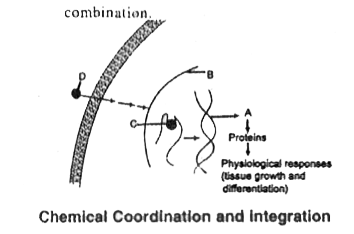Choose the correct combinations
(a) Tubellaria-mostly free living flat worms with - convoluta mucus formating rhabdites in body wall
(b) Trematoda - Comkmonly called flukes and bear - Bilharzia two suckers
(c ) Cestoda -Ecto - and endoparasite , body segmented -Echinococcus
(d) Phasmidia - Amphids -formating chemorceptor fucation -Trichuris
(b) and (c )
(a) and (b)
(a),(c ) and (d)
(a) ,(b) and (d).
The correct Answer is:b
To solve the question regarding the correct combinations of classifications in Platyhelminthes, we will analyze each option step by step.
1. Analyzing Option (a): Tubellaria
- Statement: Tubellaria are mostly free-living flatworms with convoluted mucus forming rhabdites in the body wall.
- Explanation: Tubellaria indeed consists of mostly free-living flatworms. Rhabdites are specialized cells that produce mucus, which serves as a defense mechanism. This statement is correct.
- Conclusion: Option (a) is correct.
2. Analyzing Option (b): Trematoda
- Statement: Trematoda are commonly called flukes and bear Bilharzia with two suckers.
- Explanation: Trematoda includes flukes, which are characterized by having two suckers for attachment. Bilharzia, also known as schistosomiasis, is caused by a type of fluke. This statement is also correct.
- Conclusion: Option (b) is correct.
3. Analyzing Option (c): Cestoda
- Statement: Cestoda are ecto- and endoparasites, body segmented - Echinococcus.
- Explanation: Cestoda, or tapeworms, are primarily endoparasites (not ectoparasites). They are segmented, and Echinococcus is a genus of tapeworms. The mention of them being ectoparasites makes this statement incorrect.
- Conclusion: Option (c) is incorrect.
4. Analyzing Option (d): Phasmidia
- Statement: Phasmidia have amphids forming chemoreceptor function - Trichuris.
- Explanation: Phasmidia refers to a group of roundworms (Nematodes), and Trichuris is a genus of whipworms, which belong to this group. However, the statement mixes classifications as Phasmidia is not part of Platyhelminthes. Therefore, this statement is incorrect.
- Conclusion: Option (d) is incorrect.
Final Conclusion:
The correct combinations are options (a) and (b). Therefore, the answer is that options A and B are correct.
---
- Statement: Tubellaria are mostly free-living flatworms with convoluted mucus forming rhabdites in the body wall.
- Explanation: Tubellaria indeed consists of mostly free-living flatworms. Rhabdites are specialized cells that produce mucus, which serves as a defense mechanism. This statement is correct.
- Conclusion: Option (a) is correct.
- Statement: Trematoda are commonly called flukes and bear Bilharzia with two suckers.
- Explanation: Trematoda includes flukes, which are characterized by having two suckers for attachment. Bilharzia, also known as schistosomiasis, is caused by a type of fluke. This statement is also correct.
- Conclusion: Option (b) is correct.
- Statement: Cestoda are ecto- and endoparasites, body segmented - Echinococcus.
- Explanation: Cestoda, or tapeworms, are primarily endoparasites (not ectoparasites). They are segmented, and Echinococcus is a genus of tapeworms. The mention of them being ectoparasites makes this statement incorrect.
- Conclusion: Option (c) is incorrect.
- Statement: Phasmidia have amphids forming chemoreceptor function - Trichuris.
- Explanation: Phasmidia refers to a group of roundworms (Nematodes), and Trichuris is a genus of whipworms, which belong to this group. However, the statement mixes classifications as Phasmidia is not part of Platyhelminthes. Therefore, this statement is incorrect.
- Conclusion: Option (d) is incorrect.
The correct combinations are options (a) and (b). Therefore, the answer is that options A and B are correct.
Topper's Solved these Questions
- PLATYHELMINTHES-THE FLAT WORMSBOOK - DINESH PUBLICATION ENGLISHCHAPTER - PLATYHELMINTHES-THE FLAT WORMSEXERCISE - check your grasp
9 Videos
- Plant Growth and MovementsBOOK - DINESH PUBLICATION ENGLISHCHAPTER - Plant Growth and MovementsEXERCISE - BRAIN TEASERS-IV
41 Videos
- PRINCIPLES AND APPLICATIONS OF BIOTECHNOLOGYBOOK - DINESH PUBLICATION ENGLISHCHAPTER - PRINCIPLES AND APPLICATIONS OF BIOTECHNOLOGYEXERCISE - Brain Teasers
5 Videos
Similar Questions
Flat worms are
View SolutionWhich of the following is a free living flat worm
View SolutionA foreign body which induces the formation of antibodies in the body.
View SolutionIdentify A to D and choose the correct combination

View Solutionchoose the correct sequence during formation of chemicals on early earth
View SolutionFormation of the whole body of an organism from a small fragment is called
View SolutionCombination of two AO s lead to the formation of .
View Solution
For the formation of silver mirror the only correct combination is :
View SolutionAnimal of which phylum have hooks and suckers and are endoparasite on other animals
View SolutionAssertion: Vaccination is also called preventive inoculation.
Reason: A vaccine prevents the formation of antibodies inside the body.
View Solution
